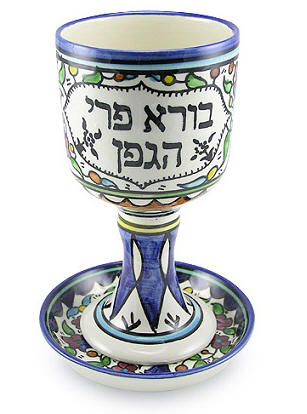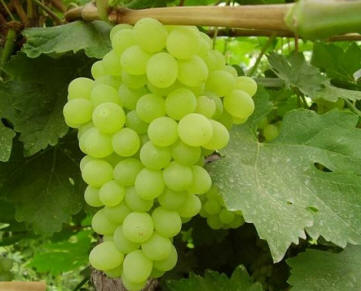
Yayin (wine) symbolizes joy and transformation in Jewish tradition, mirroring life’s journey from materiality to spirituality. From Shabbat rituals to biblical narratives, it unites celebration with profound spiritual growth, reflecting Divine wisdom, holiness, and humanity’s quest for tikkun.
Sacred Beverage
In Jewish tradition, yayin (wine) holds a sacred and transformative symbolism, representing both joy and refinement. Yayin is a symbol of celebration and a metaphor for judgment, reflecting humanity’s journey toward perfect judgement.
Reflection of Life
The process of creating yayin serves as a powerful parallel to the human evolution. Yayin (יין), as a superior and final product, emerges only after undergoing multiple stages of development. Grape juice, in its early form, symbolizes childhood and immaturity—a stage of life that is yet to be refined. Through fermentation—a process akin to navigating life’s challenges and struggles—yayin achieves maturity, signifying spiritual completion, or tikkun. This transformation mirrors humanity’s ultimate purpose: to ascend from the material, earthly realm to the transcendent, spiritual world.
The grapevine’s various products—unripe grapes, fresh grapes, and raisins—serve as metaphors for the stages of material existence and growth in the lower world. Together, these stages illustrate a broader journey of growth, refinement, and the pursuit of higher meaning.
Exodus and After
Exodus
During the Exodus and the construction of the Mishkan (Tabernacle of God) under Moses, and later during the establishment of the Beit HaMikdash (Temple of Solomon), yayin played a central role in sacrificial ceremonies. Presented alongside blessings and expressions of gratitude, a sip of yayin was taken in rituals to convey thanks to God and ask for joy.
After Exodus
Even after the destruction of the Beit HaMikdash, yayin retained its profound significance within Jewish religious practices. It remains an essential element in rituals such as Kiddush on Shabbat, Havdalah, festivals, brit milah (circumcision), wedding ceremonies under the chuppah, the redemption of the firstborn (Pidyon Haben), and the Passover Seder, where four cups of wine are consumed.
Through the act of drinking yayin, Jews symbolically transcend the material world, fostering a sacred and spiritual space. This practice serves as a means to align with Divine values and cultivate a connection to higher purpose, reflecting the enduring role of wine in the journey toward holiness and gratitude.
Numerical Significance
By drinking yayin, Jews seek to distance themselves from the material world and its distractions, striving to cultivate a spiritual atmosphere within themselves. This inward focus helps them achieve the sanctity needed to embrace higher spiritual values. The word yayin (wine), like many other Hebrew terms in Jewish mystical traditions, carries a unique numerical value and conveys profound messages, enriched with specific interpretations and insights.
The letters yod (י) and nun (ן) in yayin add up to seventy (10 + 10 + 50 = 70). When the zero is removed, the number seven emerges, considered sacred and mysterious by Kabbalists. They regard seven as a cornerstone of holiness, representing purity, peace, and joy. The numerical values of the words Shabbat and challah (bread for Shabbat) also equal seven, highlighting their spiritual interconnectedness.
Spirituality
Shabbat
Yayin is derived from grapes—a fruit regarded as one of the seven holy species—and holds a sacred and symbolic role within Jewish rituals, much like challah, symbolizing joy and spiritual elevation. Both are indispensable to Shabbat and festivals, embodying joy and spiritual elevation. In some Jewish traditions, a few drops of water are added to yayin during Kiddush, symbolizing the amplification of Divine blessings and mercy. According to Halacha, grape juice may serve as a substitute for wine in Kiddush when wine is unavailable.

Kiddush
Performing Kiddush is a cornerstone of Jewish tradition with roots spanning millennia. During the ritual, the head of the family holds a cup of wine and recites the following blessing:
בָּרוּךְ אַתָּה ה’ אֱלֹהֵינוּ מֶלֶךְ הָעוֹלָם בּוֹרֵא פְּרִי הַגֶּפֶן
“Blessed are You, God, our Lord, King of the universe, for the life-giving and the sustaining [food], for the vines and the fruit of the vine”
According to Kabbalists, red wine is preferred for Shabbat Kiddush because its color symbolizes human desires and the intrinsic drive to receive. This aligns with the spiritual principle that the desire to receive is a fundamental aspect of human nature, serving as a necessary precondition for sanctification.
Vessel of spirituality
In this context, yayin is likened to a keli (vessel), reflecting the human soul’s capacity to hold Divine light. According to the Midrash, individuals must create an internal vessel within their soul, enabling them to receive the Shekhinah (the Divine presence) and use it to its fullest. Through this preparation, individuals can attain peace, purity, and sanctity.
By honoring and sanctifying Shabbat, we create the space to receive the spiritual rewards of six days of dedicated work and effort. This work, grounded in honorable and ethical principles, serves as a process of refinement (tikkun). On Shabbat, we embrace the fruits of this spiritual journey. In essence, our actions during the six days prepare our being as a keli (vessel), ready to receive Divine light and wisdom, accompanied by love, as a gift from God. Moreover, from a Kabbalistic perspective, each letter of the word yayin (יין) reflects this profound concept.
Kabbalistic interpretation
The letters of yayin (יין) further embody mystical meanings. The first yod (י) represents Shekhinah, or Divine wisdom. The second yod (י) signifies chesed, or love and kindness. Finally, nun (ן) symbolizes bina, the fifty gates of understanding.
The Talmudic text Gemara compares the Torah to water, bread, wine, and oil, each representing a unique aspect of its Divine wisdom. These metaphors highlight the multifaceted nature of the Torah, revealing its depth and spiritual significance through every word and phrase.
Preparation
Yayin holds a significant place in Jewish religious traditions. Its method of preparation has remained unchanged over thousands of years. Kosher yayin, made from grapes, is produced by fermenting crushed grapes, typically yielding red or white wine. The natural sugars in grapes act as a fermenting agent, transforming into alcohol with a mild potency. While wines have also been made from fruits such as dates, apples, pears, and even starchy materials, kosher wine for religious rituals must be derived exclusively from grapes. According to Halacha (Jewish law), raisins and other kosher-approved additives may be used to enhance its flavor.
Traditionally, families would prepare their annual supply of yayin in jars or containers using age-old methods, as purchasing and selling wine was often discouraged. Jewish sages have offered meaningful insights into the selection of grapes for wine. Biblical references suggest that the use of grapes dates back to the very beginning of creation, even before the existence of Adam and Eve.

The Properties of Yayin
Revelation of realities
This section explores the unique qualities of yayin and its profound connection to the Torah, functioning as a key to unlocking secrets and revealing truths. Like bread, yayin undergoes a process of ten stages, from the harvest of its fruit to its readiness for consumption. In Kabbalistic teachings, these ten stages symbolize the Ten Sefirot—Divine attributes or energies. To achieve tikkun (spiritual perfection) and ascend to the world of Atzilut (the highest spiritual realm of emanation), ultimately connecting with Malkhut (Divine kingship), individuals must observe the commandments and progress through these stages. This journey of refinement enables one to elevate their spiritual state.
The tree of knowledge
In the book of Bereshit (Genesis), chapter one, it is said that when Adam and Eve ate the fruit of the Tree of Knowledge, they were immediately expelled from Eden. Their lives became burdened with mortality, pain, suffering, and challenges. Some interpretations suggest that the fruit of the Tree of Knowledge was a grape.
Purity, interdependence, and independence
Interestingly, the grapevine is unique in that it cannot be grafted onto other trees, symbolizing its purity and authenticity. This inherent quality underscores its connection to holiness and sanctity. Additionally, the structure of a grape cluster reflects unity and interdependence, much like a harmonious community. Yet, each grape remains an independent, complete fruit.
Biblical References to the Grapevine
The grapevine initially grows as a sprawling, bush-like plant, relying on tendrils to climb and support itself on trees or walls. It begins to bear fruit after four years and reaches full maturity after ten years. The importance of the grapevine and its fruit has been recognized since ancient times, particularly after the Israelites’ journey to Egypt. Its prominence in several Torah passages highlights its elevated status compared to other fruits.
- In Bereshit, Parashat Vayechi, chapter 49, Jacob, while blessing his sons, likens Joseph to a fruitful vine with branches extending over walls.
- In Bamidbar, Parashat Shelach Lecha, chapter 13, after the Israelites’ exodus from Egypt, as they approached the borders of the Promised Land, Moses selected 12 trusted men (one from each tribe) to scout the land. Their mission was to assess the region’s social conditions, agricultural fertility, population, living standards, and city fortifications. After 40 days, the scouts returned carrying an enormous cluster of grapes on two poles, along with pomegranates and figs. They presented these on the 9th of Av upon their return to the Israelite camp.
Destructive Effects of Yayin
Loss of morality
Talmudic commentators have extensively explored the dual nature of yayin, emphasizing both its sacred and destructive potential. Wine can elevate the human spirit and sanctity, but it can also degrade morality, holiness, and self-control if misused. Its impact depends on how it is consumed—responsibly or recklessly.
Wine’s inherent power can certainly bring joy and exhilaration. However, because its potency often exceeds human capacity for control, overindulgence can lead to a breakdown in resistance, mental decline, loss of balance, and the inability to assume responsibility when drunk.
Prohibitions in the Torah
The Torah includes a commandment prohibiting Kohanim (priests) from consuming alcoholic beverages, especially when entering the Mishkan (Holy Sanctuary) to carry out their sacred duties. Moreover, the Torah repeatedly warns against the dangers of excessive wine consumption in several Parashot, emphasizing how it can lead to irresponsibility, loss of self-control, and irreverence in holy settings.
- Bereshit, Parashat Noach (Genesis, Chapter 9): After planting a vineyard, Noah drank wine, became intoxicated, and lay uncovered in his tent. His son Ham saw his father’s nakedness and informed his brothers. Shem and Japheth entered the tent with their backs to their father, respectfully covered him without looking, at left with their back still to their father. When Noah awoke and learned of Ham’s actions, he cursed Ham’s descendants to servitude while blessing Shem as God’s chosen and Japheth with prosperity under Shem’s guidance.
- Bereshit, Parashat Vayeira (Genesis, Chapter 19): Lot’s daughters made their father drunk on two consecutive nights. In his intoxicated state, Lot unknowingly fathered two sons, the younger daughter having followed the older daughter: Moab from the elder daughter and Ben-Ammi from the younger. These sons became the ancestors of the Moabite and Ammonite nations.
- Vayikra, Parashat Shemini (Leviticus, Chapter 10): Aaron’s sons, Nadab and Abihu, entered the Holy Sanctuary while intoxicated, desecrating the sacred space. As punishment, they were consumed by Divine fire.
Revealing secrets
The Gemara advises against overindulging in yayin (wine), particularly in the presence of strangers, as it can lead to drunkenness. A drunk person loses self-control and the ability to keep secrets, often revealing truths unintentionally—a concept captured by the phrase “drunkenness and honesty”.
As noted earlier, one of the key attributes of yayin is its power to expose hidden truths. From a Kabbalistic perspective, this aligns with the idea of uncovering the deeper mysteries within the Torah.
Sources
Mythological Beliefs by Yosef Setareshenas


 فارسی
فارسی